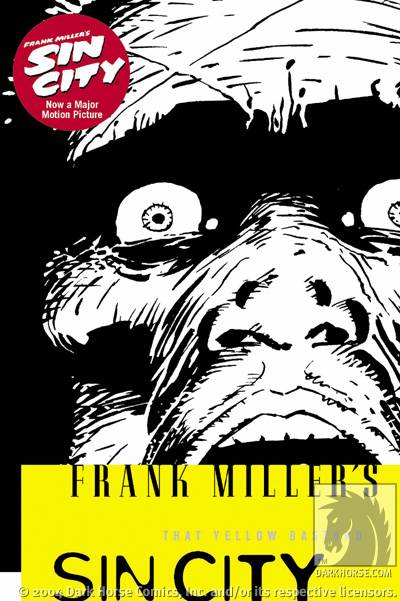JUNK GUN FEVER SINKING TO MY BRAIN
I wrote a short story over the last two days. It's a taut little number, clocking in at 2,300 words, and it's written for all my lovely boys out there. It's called "You Once Said That You Liked Happy Endings."
Speaking of, the Stolen Sweets finished their first residency tonight. That was two solid months of Wednesdays at the Laurelthirst Pub. They were a much tighter band tonight than when I first saw them eight weeks ago. That much playing out will do that to you. I wrote the last quarter of "Happy Endings" there. Check their site for future gigs.
But before that I went to the Dark Horse screening of the Sin City movie. I kept my expectations pretty low. I love the comics, especially That Yellow Bastard, but worried that they had bitten off more than they could chew by adapting three volumes in one. Also, I've never really been knocked out by a Robert Rodriguez film.
I have to say, though, I am impressed. Even though sometimes the style is a bit overwhelming or a little too much like a video game, Sin City is a special feat of visual excitement. The performances, the music, the look--it's all of its own world (though maybe they could have toned back some of the costumes on the women, that aspect got a little too fetishistic after a while). Co-directors Rodriguez and Frank Miller do pack a lot of story in one film, but it works. Plus, being such literal adaptations, it makes it fairly evident that Miller's original work in the graphic novels is a lot more concise than it appears. He lets his moments breathe, and it makes the books feel hefty. Yet, put into action, pages fly by like lightning.
In fact, there were a couple of story points in the That Yellow Bastard section that jumped out at me, things I never noticed on the page. In mulling them over, though, I think they illustrate a difference in the way we take in information in two different visual mediums.
If you haven't seen the movie or read the book, you may not want to read the next couple of paragraphs. They aren't major spoilers, but I still want to give fair warning. A picture separates this portion and the next for your convenience.

After Hartigan and Nancy run the Yellow Bastard off the road, they go to a nearby motel, unaware that the Bastard is hiding in their backseat. It's a standard device used in thrillers. Only, a big deal is made of how bad the Yellow Bastard stinks: first in the prison, second at the crash site, when Hartigan sticks his fingers in one of the many pools of gooey blood in the snow (the film is black-and-white for the most part, except for spot colors, including the Yellow Bastard's very yellow skin and blood). If this bad dude smells so rank, wouldn't they notice him in their car? Sure, it could have easily been explained by the fact that the odor could be on Hartigan from examining the scene, but no such explanation is made. I assume it happened the same way in the comic book, but it didn't bother me there. The comic would be evocative in a different way--bolder, but more static--whereas the Bastard's greasy skin and sticky blood is much more shiny on film, it moves. It activates our sense memories in ways comics don't often do. When we turned the page in the book, the thought of the Bastard's stench faded.
The other quibble would be down to the spatial and auditory nature of film versus comics. In the final issue of That Yellow Bastard, when Hartigan rushes to the farm to rescue Nancy, we get a panel where we see that Kevin is still there, putting us in a timeframe before the first story arc with Marv, The Hard Goodbye. It's a cute trick in the comic, and it helps establish how interconnected all the tales are, but it becomes troublesome in the movie. In the book, that panel once again drifts away as soon as we turn the page, and we don't associate Kevin reading on the porch with the barn where the Yellow Bastard is doing his dirty work around the corner. Nor do we have the sounds of Hartigan and the Bastard tussling, which would easily be heard from Kevin's vantage point. In the film, we can't forget Kevin is not very far away, nor ignore the volume of the violence, and we realize Kevin would most likely try to rescue his boss' nephew.
Minor points that didn't hurt my enjoyment of the film at all. I bring them up only to ponder the difference between two forms that are often compared. See the movie for yourself and make up your own mind. Just be prepared to immerse yourself in a brutally violent, darkly comic, alluring place: Sin City.
Current Sountrack: Suede, Dogmanstar
golightly@confessions123.com * The Website
[to leave comments, click on the time-stamp below, then scroll down on the new page] – All text (c) 2004 Jamie S. Rich
















